A Sydney couple’s bold bucolic vision bears fruit in Italy’s Umbria
A lockdown-inspired whim led Annie Conley and James Hird to lovingly restore a vineyard, biodynamic farm and historic family home that is already yielding spoils.
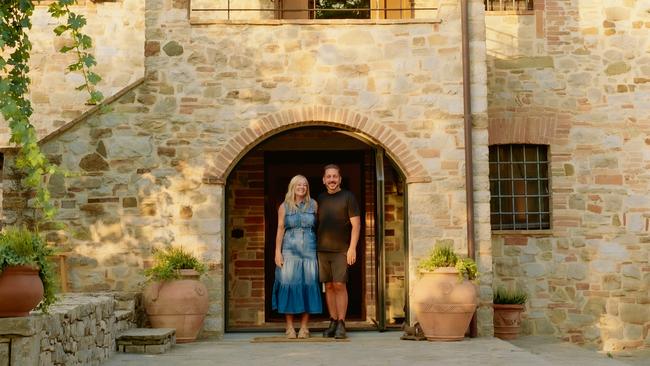
You can now listen to The Australian's articles. Give us your feedback.
Piano, piano. Three years after trading in their fast-paced life in Sydney for the bucolic Italian countryside, this phrase, which in Italian means to slow down, has taken on new significance for Annie Conley and James Hird.
It’s early morning in Umbria when the pair takes WISH on a virtual tour of their sprawling podere; a vineyard and historic stone farmhouse surrounded by acres of lush grapevines, olive groves and wheat fields. The warm morning promises another hot summer’s day; perfect weather to road test the latest addition to the hillside estate, named Beulah Violetta in honour of their grandmothers.
“This is what our architect Carl Pickering came up with,” Conley says, panning her camera to reveal a resort-style infinity pool, its wet edge falling away to unencumbered views of the charming medieval township of Todi. “We got to swim in it for the first time yesterday.”
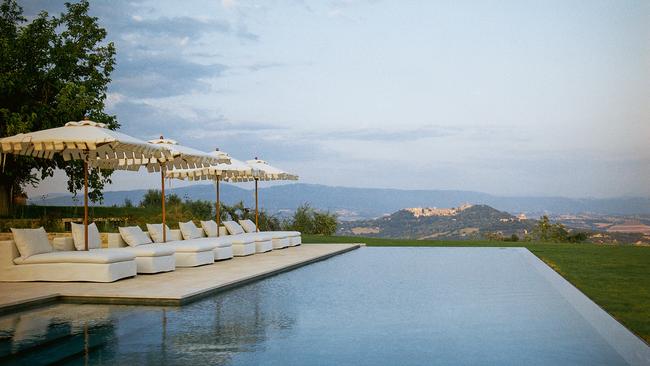
The outdoor ovens are nearly finished – “that’ll be where all the al fresco fun happens,” says the Sydney-raised writer and chef – and the neat rows of vibrant, leafy greens emerging from the garden’s newly-tilled vegetable plots suggest a generous edible bounty is on its way.
“We looked at hundreds of properties before finding this one. It’s been a long journey, but it’s just coming to fruition on all fronts,” adds Hird, a mix of pride and exhaustion in his voice.
The landlocked region, bordered by Tuscany to the west, Marche to the east and Lazio to the south, wasn’t on their radar when the idea to buy and run a vineyard in Europe was born.
The couple was stuck at home during covid when, Hird says, a lockdown-induced penchant for Beaujolais and French wine inspired the pair to consider trading in life in Sydney’s Eastern Suburbs for a provincial French tree-change.

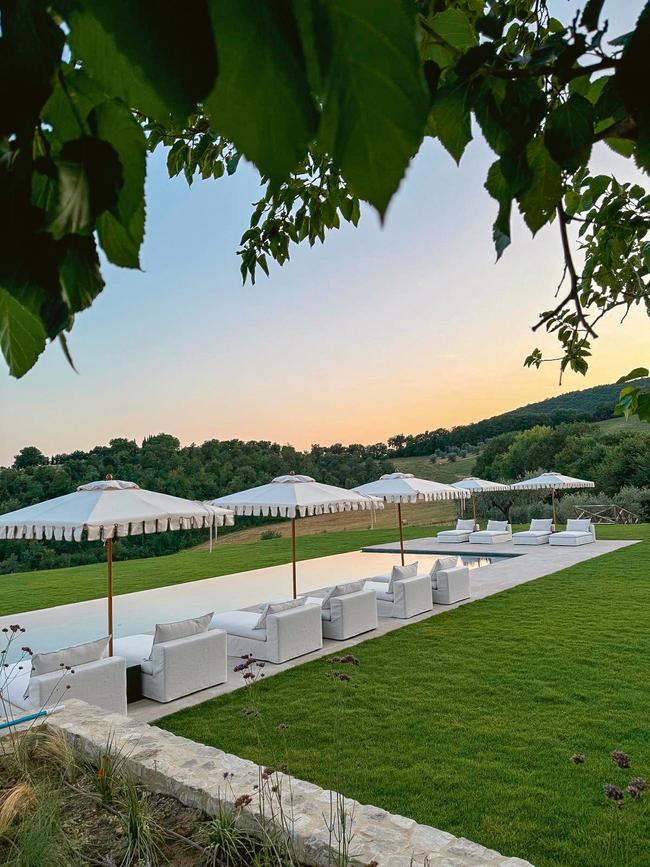
After scouring the Gallic countryside for the perfect plot but finding nothing which felt right, the pair – who married in 2019 – expanded their search. “I’ve worked through Italy a lot, in vineyards and buying, and Annie’s travelled extensively, too, so we both knew Italy really well,” Hird says.
In May 2022, they spent a month driving through the regions of Piedmont, Lazio and Tuscany, visiting properties for sale. Once again, none felt right. The deflated couple were preparing to head back to Sydney. “We were leaving Rome after many kilometres of driving and decided to meet a real estate agent in Umbria,” Conley says.
“The farmhouse had great character, and we saw the potential. We called friends who were nearby, and they confirmed it was a gem. It had everything we wanted: the views, the spacing and the bones. We fell in love with it immediately.”
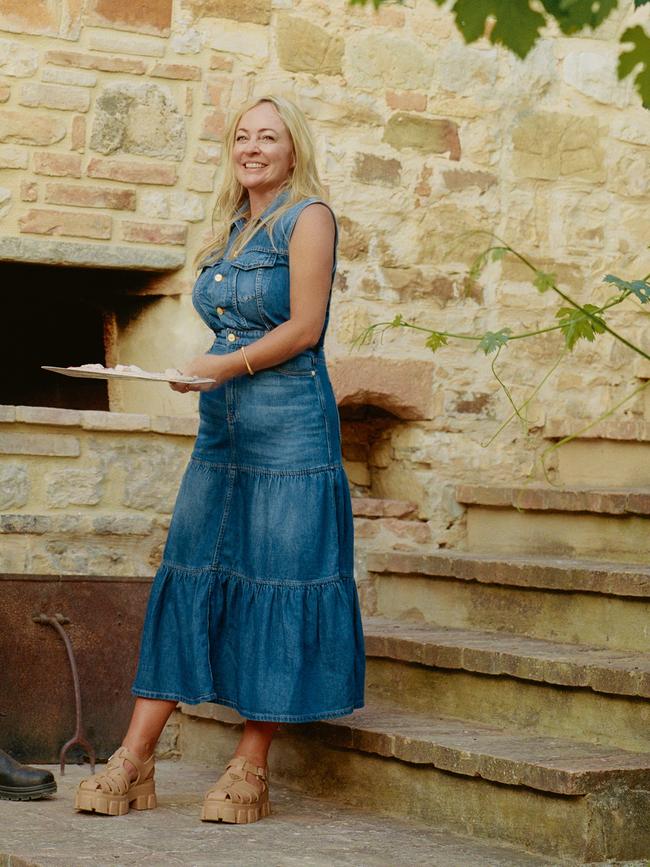
The property, which has ten hectares of vines, 400 olive trees, and a beautiful 150-year-old farmhouse, had a solid foundation; but both the home and land needed considerable work. “It was liveable,” Conley says, “but we needed to make it special for renting out and balance the renovations with our agricultural plans. It was like a puzzle, and we wanted to do it right.”
The pair, wanting to respect the building’s original features, decided to make what their architect dubbed a few “surgical interventions” to add light and imbue the space with a contemporary feel. “Umbrian farmhouses are really beautiful, but they’re also quite dark,” Hird concedes, “so it ended up having about two years’ worth of surgery.”
Their story has all the hallmarks of a romantic adventure – buying a rundown vineyard in Italy and turning it into a thriving biodynamic farm and family home. But as Hird points out, “You think about learning agriculture, but you forget about the administration, language barriers, and bureaucracy involved”.
Navigating something as seemingly benign as planting more olive trees on their newly bought land proved a regulatory challenge.
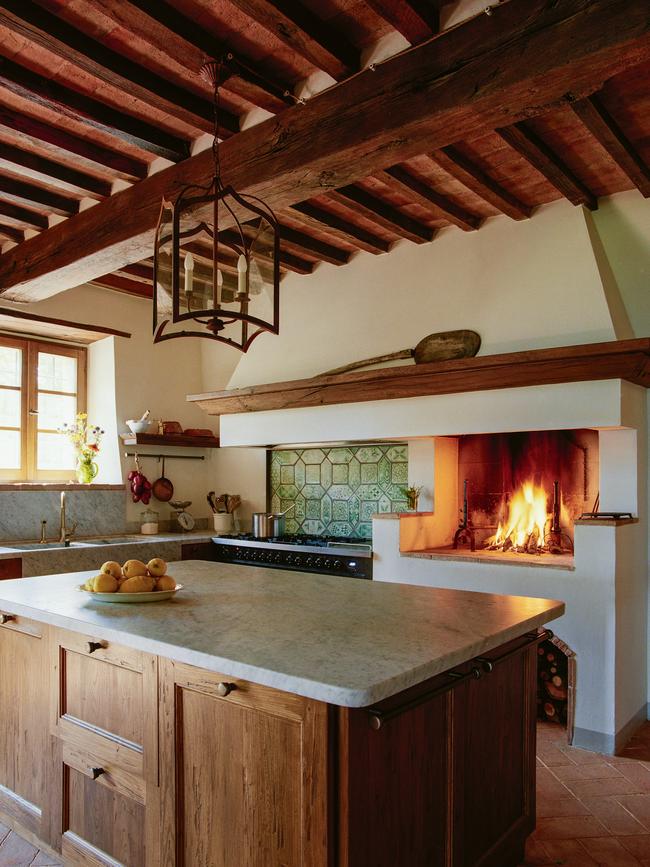
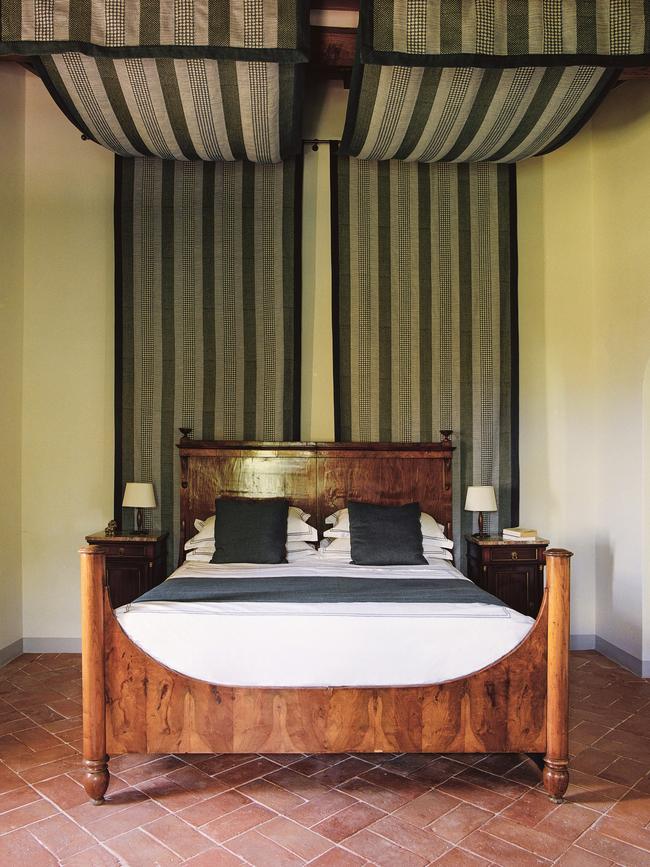
“You think, ‘I’ll just plant cabernet there’, or whatever you want to plant, sangiovese. But you can’t,” Hird explains. “You have to apply for a permit each year and enter a sort of ‘grape lottery’ that determines the amount of funding and what you can plant.”
Support and advice from the local agricultural cooperative has proved a huge help, says the wine consultant at Icebergs Dining Room and Bar in Sydney’s Bondi, and they were able to add four hectares of olive trees and expand their vineyard.
“It hasn’t been easy, setting up companies and businesses, and navigating those different channels,” he says.
“Legal systems and bureaucracy is technical and tricky, but we’re really fortunate we landed in Umbria, which is really pro-agriculture; it feels like we’re finally getting our head above water.”
Adapting to the Umbrian way of life, which is still heavily dictated by the changing seasons and longstanding Italian rituals, has been an adventure in itself. Social customs, such as the post-lunch passeggiata (walk) and siesta, and a firm observance of Sunday for rest and time with family, have easily been embraced. Falling in step with the local farming conventions, however, has taken some more time, but also led to the most rewarding moments.
“It slows you down,” Hird confirms.

“Whatever you want to do, whether it’s wine or olive oil … you’re thinking in two- or three-year blocks. It’s a really nice lesson in patience because if we want cavolo nero this winter, we’re thinking about it now in the summer heat. Accepting and embracing the seasonality of food has been a really beautiful thing.”
Producing an easy-drinking wine they both loved and were proud to share with friends was always their main motivation for embarking on the bold tree-change – and it is something they’ve achieved.
“We wanted to make something that was fun and easy, and we’re beyond happy with it,” Hird says of the light red, which Conley lovingly refers to as their “Umbrian Beaujolais”. This month, Stesso Stesso will make its Australian debut, appearing on the shelves of retailers DRNKS and P&V, as well as the wine lists of venues such as Bar Copains in Sydney’s Surry Hills, as well as Hird’s former workplace.
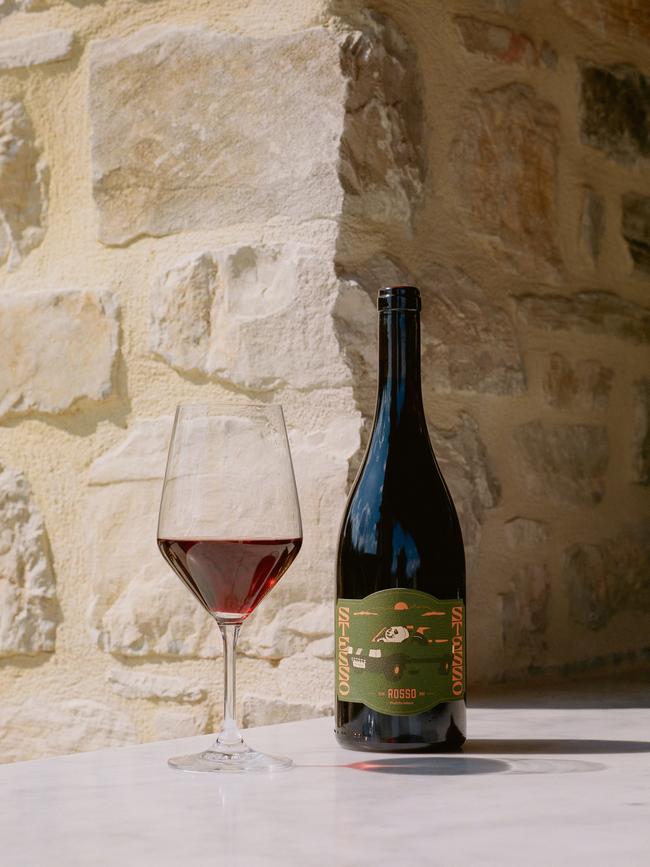
But a completely different crop has offered them the greatest validation that the hard work is paying off. “We’re working with some really great people on the wine, but the olive oil was a real surprise,” Conley says.
The experience of harvesting the olives and taking them to the local mill for pressing was, Hird adds, both “emotional and rewarding”.
“Sitting down with the miller and tasting our oil for the first time was probably the most emotional we’ve been about anything we’ve done because we were sort of a bit naive to what the process was,” she says.
“You just line up with your olives, and everyone’s standing around smoking cigarettes out the front with their different quantities of oil; some people are rolling out with a tin, some people have pallets … and the miller’s wife is grilling bread and everyone’s tasting their own oil as it comes off the press.”
The pair has already secured a retailer in Sydney to stock the first iteration of Beulah Violetta extra virgin olive oil, an unfiltered and robust style reflecting the couple’s focus on biodynamic farming and uncompromised flavour.
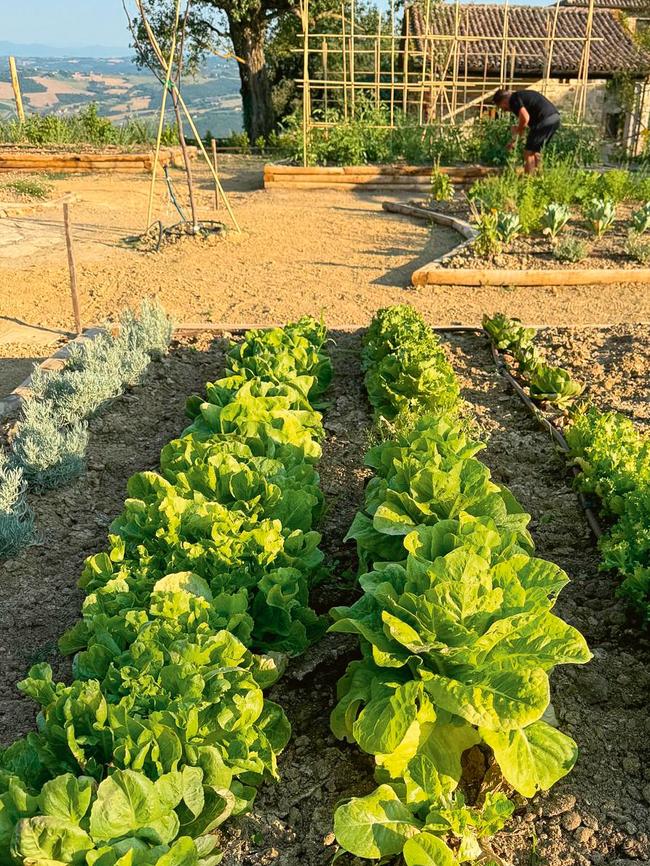
“We’re quite blown away with what we’ve produced,” Conley says.
Their next agricultural test – which has been a year in the making – is wheat. The crop has just been harvested, with the first pasta product due on shelves this November. Cordon Bleu-trained Conley is looking forward to testing it out in the home’s kitchen, which features a wood-burning fireplace, a feature which topped her kitchen wish list during their search.
A book is in the works, too, but true to their new-found rhythm, they’re taking a piano piano approach. “If you’d asked us a year ago, we would have said it would be ready [by now],” Hird says, “but it’s all dependent on timing because we want to show the seasonality of the produce.”
Tonight, they’re hosting a group of Aussie friends for dinner; the latest of many antipodean visitors they’ve entertained during the 2024 European summer.
Hird is on oven-lighting duty. “We light it a couple of hours before we start cooking, so James is out there sweating, while I get to stand in the kitchen and chop and make sauces and do all the lovely stuff,” Conley laughs.
“We’ll probably roast two chickens, and throw some other stuff in there – some peppers, lots of veggies, to make the most of the oven coming on,” Hird says, as Conley adds she has been “stuffing a lot of tomatoes lately, making a lot of pomodori di riso”.
With plenty of mouths to feed at Beulah Violetta, leftovers, if any, will be gone by the following day’s lunch.
The sun is flooding the valleys when we wrap up our tour; a sign that time is running out to get the ovens ready for the evening’s feast. But neither Conley nor Hird seem hurried. They’re on Umbrian time now.
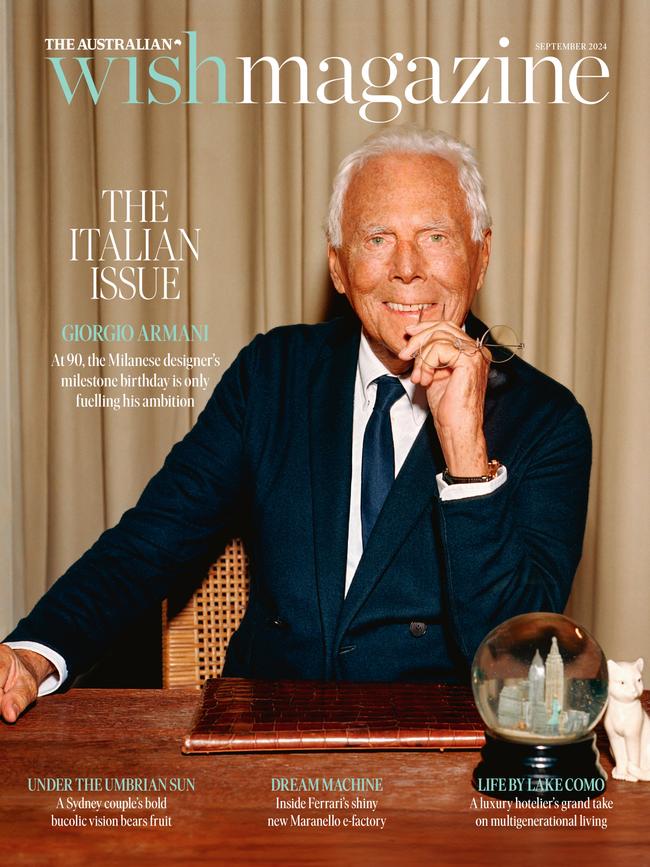
This story is from the September issue of WISH published in The Australian on Friday.




To join the conversation, please log in. Don't have an account? Register
Join the conversation, you are commenting as Logout